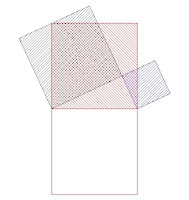In my ongoing quest to find great math resources on Twitter (not hard), I started following Steve Wyborney (@SteveWyborney). Steve is a math teacher and coach in Oregon. He has been posting high quality math activities immediately usable by elementary teachers. I will share a few of them here.
Teachers often struggle with math tasks that feel just right for some students but not others. Steve’s activities are accessible by a wide range of learners in the elementary grades. They provide access points for many but also opportunities for challenge within the realm of grade-appropriate number sense, place value understanding, and additive or multiplicative reasoning.
Steve has created this subitizing/number patterns video that teachers can show to students, pausing at a certain spot to allow thinking and noticing. It couldn’t be much easier. He provides a printable page to give to students. Simple to try, powerful results.
Watch Steve’s video of ideas for how to use this resource. Then you can get the interactive powerpoint slide he created and try it with students. I can’t get it to work on a Chromebook, so you probably need a computer with Powerpoint installed.
These are simple tools, already frequently used in elementary mathematics, but often without the kind of exploration and reflection encouraged by Steve.
If you explore Steve’s blog, I’m on a Learning Mission, you will find lots more high quality instructional strategies as well as tools that are immediately usable with students.





